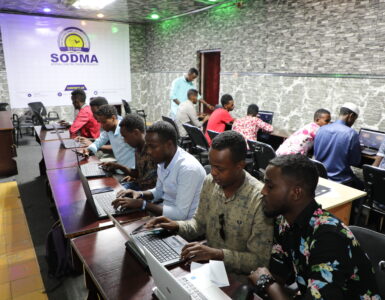Amberscript conducted research among 350 students from 175 different universities in 15 European countries between August of 2020 and January of 2021 to check the level of accessibility measures implementation.
As of September 2020, the EU’s new rules for web accessibility make it mandatory for public organisations such as (public) universities to make digital content accessible to everyone. For media content (such as audio and video), this includes providing captions and alternative texts to make the content accessible for people with auditory impairments. Next to that, adding captions greatly improves the learning experience of students by improving the engagement with videos, by triggering multiple senses and by making video content searchable.
Amberscript conducted research, to check how digital accessibility standards were implemented in different universities across Europe. Key results show that whilst more than 80% of universities are using video content frequently, almost 76% of those videos did not include subtitles.
It’s undeniable that there’s been an improvement towards digitalization in the past years – Amberscript’s survey, which covered students from 175 different universities across 15 different European countries, found that whilst video usage has increased dramatically in higher-education institutions since the start of the pandemic – almost 80% of survey respondents now state that video is used ‘often’ or ‘very often’ in their day to day studies – almost 76% of those videos did not include subtitles. Some of the respondents mentioned their institutions shared their lessons on Youtube, with automatic generated subtitles.
At the same time, however, the ongoing digitalization poses a significant challenge to students with disabilities. Without designing educational content in a digitally accessible way, students with impairments are structurally excluded from higher education as the new reality of education continues to take shape.
The results of this survey show that the use of video in higher education has become the new norm. While this development offers huge benefits for educators and for students, it becomes also apparent that digital accessibility has not been a priority for educators in the past months. Now, as this new situation becomes more and more normal, educators need to take the aspect of digital accessibility into account. Education should be inclusive – and technology can help to get a step closer towards becoming fully inclusive.
Thomas Dieste, Amberscript COO and co-founder, explains, “Public organisations, universities included, are working hard to adapt to providing education remotely whilst aiming to meet the regulation, but it’s clear that universities need to make this a visible priority. Research shows that all students learn more easily when they use multiple senses (hearing and reading) when absorbing information. Ultimately, offering accessible services is not only about adhering to legislation, it is also improving the quality and accessibility of digital learning for all.”
About Amberscript
Founded in 2017, and based in Amsterdam and Berlin, Amberscript’s vision is to make all audio and video accessible. Amberscript offers a variety of solutions to create high-quality captions for large volumes of content. With speech recognition algorithms which are specifically tailored towards the academic sector and a large crowd of qualified transcribers, Amberscript can offer captioning solutions at scale and integrated into workflows within Mediasite, Kaltura, Opencast and other Video Management Systems. For more information, visit www.amberscript.com.
The research report can be found here.
Editor’s note: Thomas will be joining us for a Media & Learning online seminar on the topic of accessibility in Higher Education on 9 September, for more information, including how to register, follow this link.












